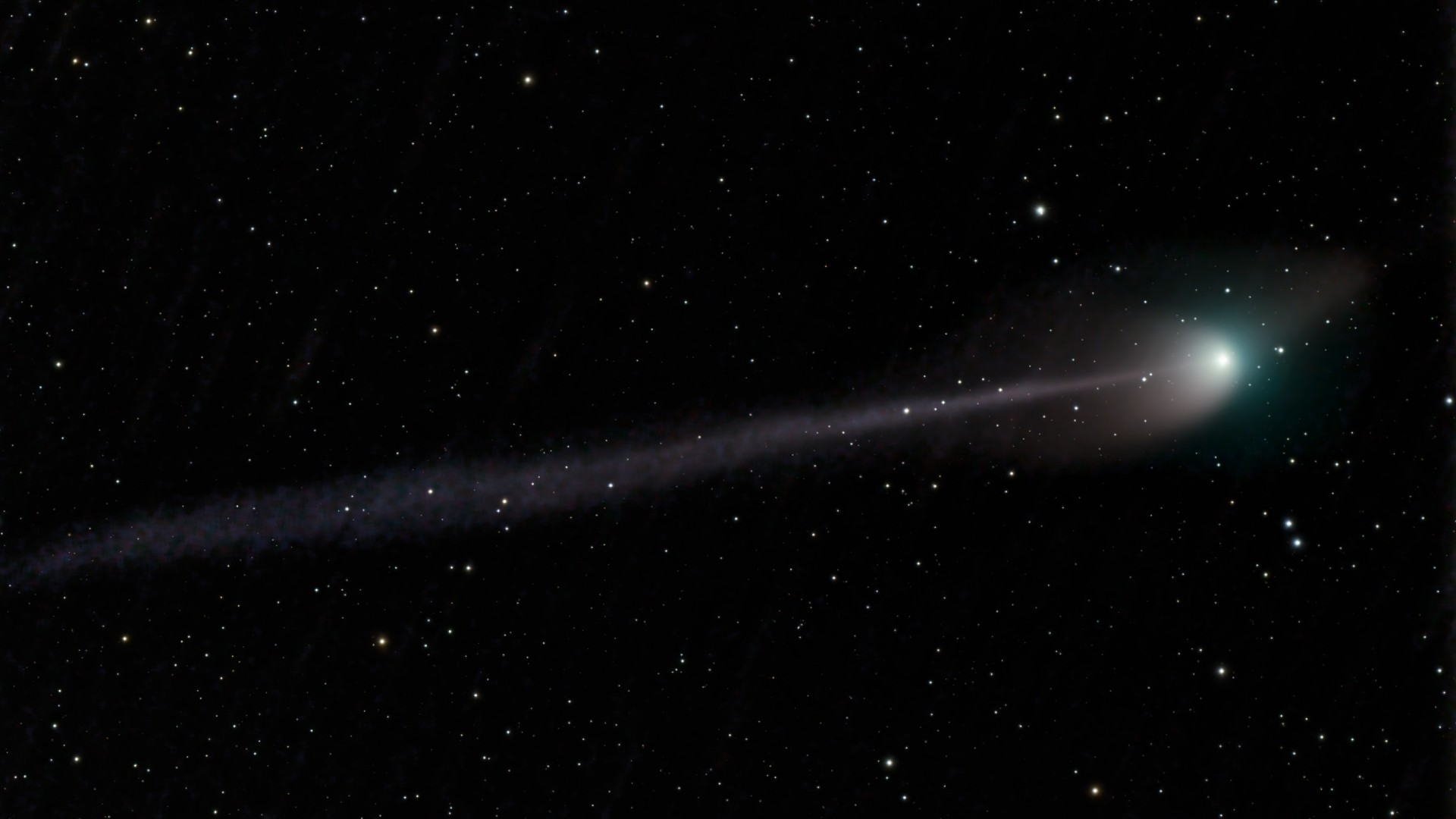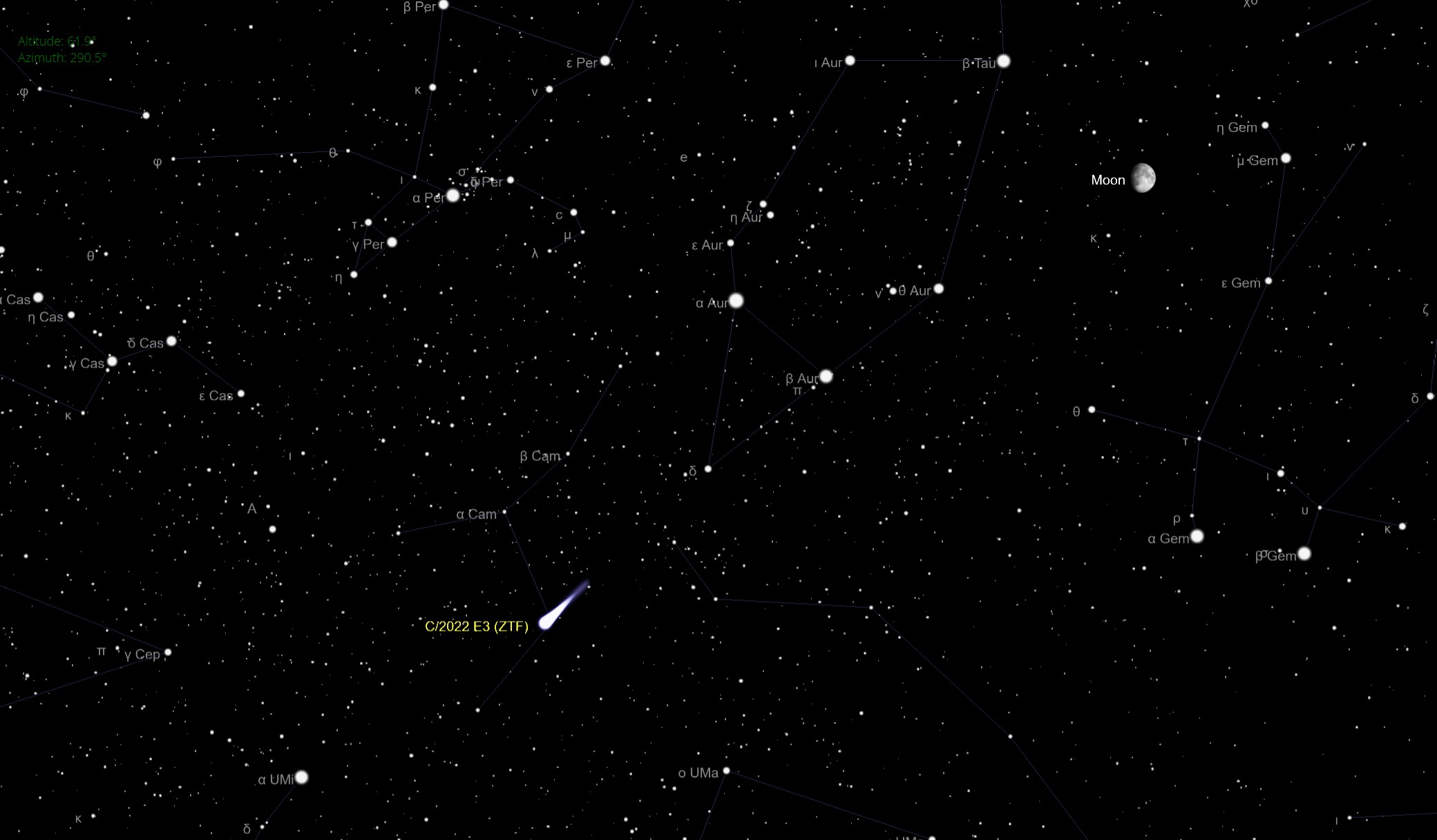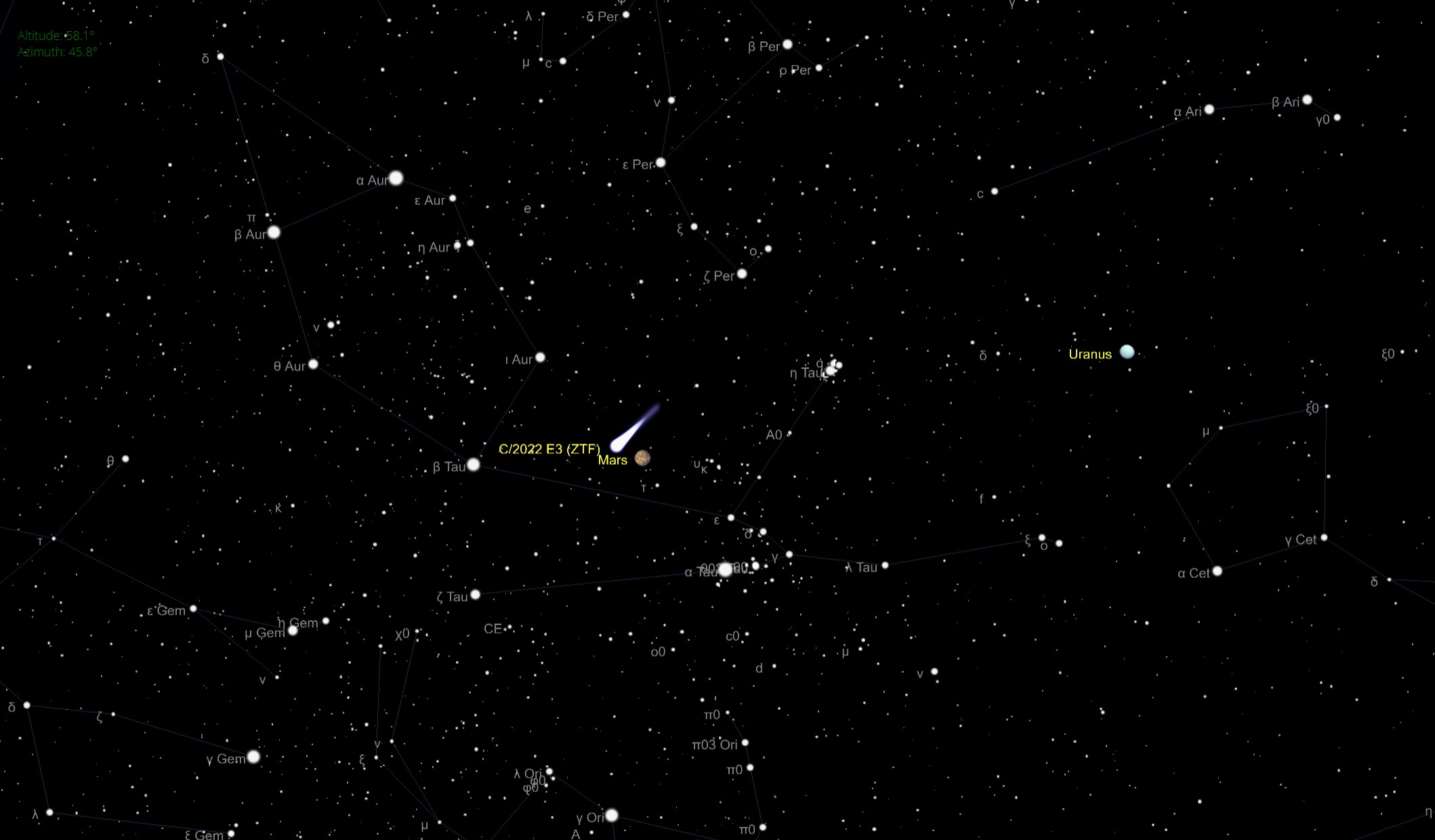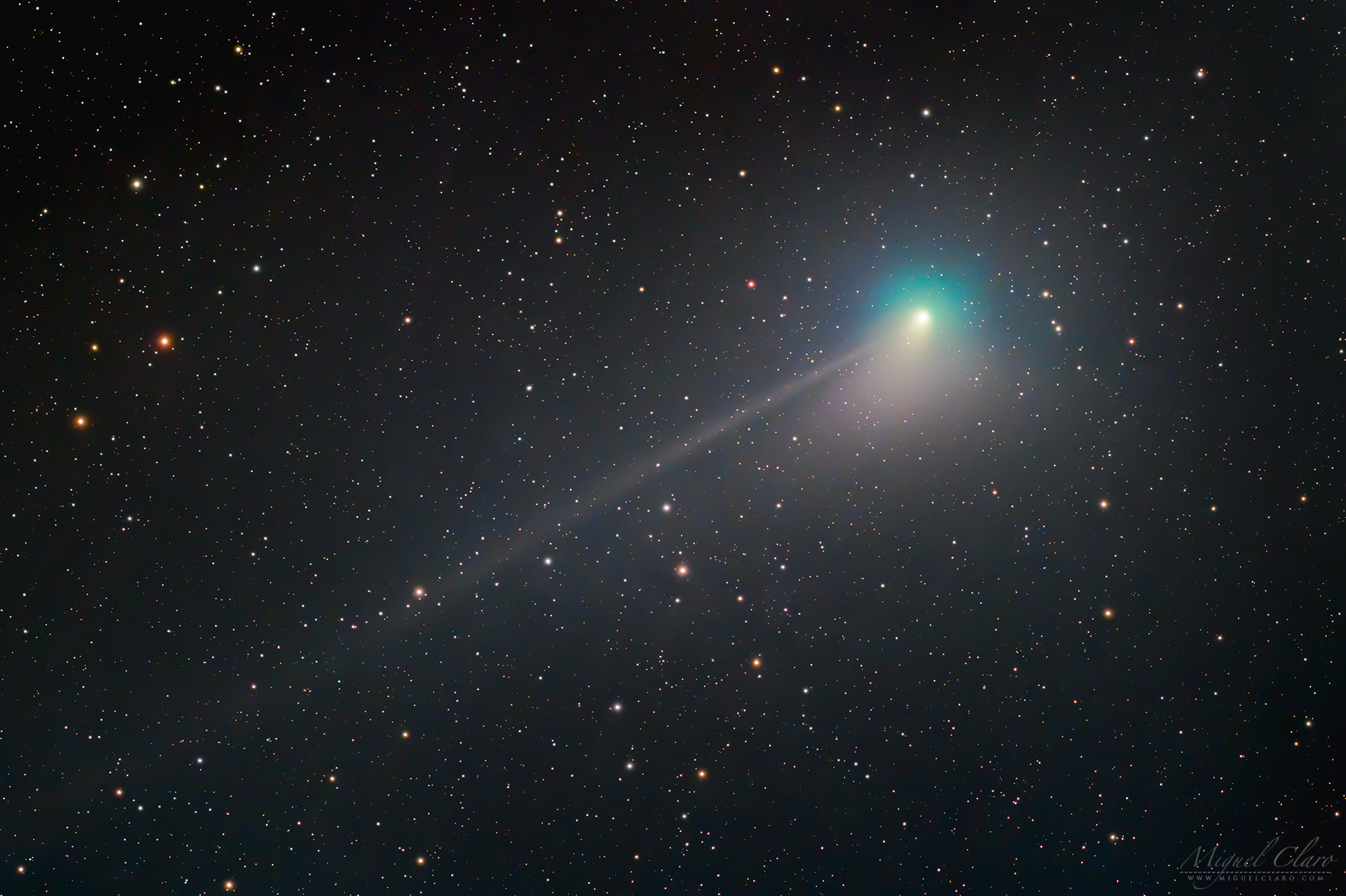Green comet C/2022 E3 (ZTF) will be closest to Earth today. Here's how to see it.
C/2022 E3 (ZTF) hasn't been so close to Earth for 50,000 years since the last ice age and prior to the extinction of the Neanderthals.

On Wednesday (Feb. 1) a comet that has not visited the Earth since the last ice age and the time of the Neanderthals will make its closest approach to our planet, or perigee.
Excitingly, the comet C/2022 E3 (ZTF), which last passed through the inner solar system around 50,000 years ago, will be at its brightest during this time and may even be visible to the naked eye under the right conditions. The comet should be observable for days as it approaches our planet and then recedes on its way to the outer solar system.
During the comet's perigee, it will come to within a distance of around 26 million miles (42 million kilometers) from our planet, which is equivalent to about 28% of the distance between Earth and the sun. If you've been waiting to get a look at C/2022 E3 (ZTF) before it speeds away, now is your best chance. You can also watch the comet live online on Feb. 1 in a free webcast at 11 p.m. EST (0400 GMT) from the Virtual Telescope Project.
Related: How to see the green comet C/2022 E3 (ZTF) in the night sky now
More: How to photograph and view comets in the night sky

Looking for a telescope to see comet C/2022 E3 ZTF? We recommend the Celestron Astro Fi 102 as the top pick in our best beginner's telescope guide.
According to In-the-Sky, from New York City C/2022 E3 (ZTF) is circumpolar, meaning it is permanently above the horizon, and should therefore be visible for most of the night. It will be visible in the Camelopardalis constellation while at perigee, a large but faint area of sky devoid of bright stars and located close to the north celestial pole.
The comet will become visible at around 6:49 p.m. EST (2349 GMT) on Wednesday (Feb. 1) when it will be 49 degrees over the northern horizon. C/2022 E3 (ZTF) will climb to its highest point in the sky, 58 degrees over the northern horizon, at around 9:46 p.m. EST (0246 GMT). Following this it will disappear in the dawn light at around 5:57 a.m. EST (1057 GMT) on Feb. 2 while at around 30 degrees over the horizon to the north.

The comet will remain visible through early February, and will finally become visible to observers in the southern horizon this month. C/2022 E3 (ZTF) may be visible to the naked eye but should be easier to spot with binoculars or a telescope. The easiest times to spot it may be on Sunday (Feb. 5) when the comet is next to the bright star Capella in the Auriga constellation, or between Feb. 9 and Feb. 13 when it will shine near Mars in the Taurus constellation.
Get the Space.com Newsletter
Breaking space news, the latest updates on rocket launches, skywatching events and more!

If you're hoping to observe C/2022 E3 (ZTF), our guides for the best telescopes and best binoculars are a great place to start. If you're looking to snap photos of the night sky, check out our guide on how to view and photograph comets, how to photograph the moon, as well our best cameras for astrophotography and best lenses for astrophotography.

C/2022 E3 (ZTF) made its close approach to the sun, its perihelion, on Jan. 12 when it passed to within 100 million miles (160 million kilometers) of our star before heading towards Earth.
The orbital period of C/2022 E3 (ZTF) is 50,000 years according to NASA's Jet Propulsion Laboratory (NASA JPL), meaning the last time it came so close to the Earth or the sun our planet was in the midst of the last glacial period or "ice age" and Neanderthals still shared the planet with our early ancestors, the first homo sapiens.
C/2022 E3 (ZTF) was first identified in March 2022 by the wide-field survey camera at the Zwicky Transient Facility inside the orbit of Jupiter. Initially, astronomers suspected that it was an asteroid, but C/2022 E3 (ZTF) soon began to brighten as it approached the sun.
This is a behavior displayed by comets as they approach the sun and are heated by radiation from our star, with the material at their surface transforming from solid ice to gas in a process called sublimation. This pointed to the true nature of C/2022 E3 (ZTF) and hinted at its potential visibility over Earth.
Editor's Note: If you snap the comet C/2022 E3 (ZTF), and would like to share it with Space.com’s readers, send your photo(s), comments, and your name and location to spacephotos@space.com.
Join our Space Forums to keep talking space on the latest missions, night sky and more! And if you have a news tip, correction or comment, let us know at: community@space.com.

Robert Lea is a science journalist in the U.K. whose articles have been published in Physics World, New Scientist, Astronomy Magazine, All About Space, Newsweek and ZME Science. He also writes about science communication for Elsevier and the European Journal of Physics. Rob holds a bachelor of science degree in physics and astronomy from the U.K.’s Open University. Follow him on Twitter @sciencef1rst.
-
davidbsimmons I'm thinking that the statement, "the comet ... passed through the inner solar system around 50,000 years ago," is purely theoretical, not observable, not provable, not scientific.Reply -
ecky thump I also wondered but assume that the earths position back then was calculated???? I have seen software that pre-dicts positions on a given year.Reply -
ecky thump There is a skymap showing the comets position on Feb 1 and Feb 10. How am I supposed to see that map its far too small. All I can see is the moon and the comet.Reply -
rod I looked at the comet again last night, note posted here. https://forums.space.com/threads/watch-a-green-comet-make-its-first-earth-approach-in-50-000-years-with-this-free-webcast.59815/Reply -
cometlove2023 To the author Robert Lea... the first picture in your article is Comet Neowise. It is not Comet ztf e3.Reply -
gscottwells Replydavidbsimmons said:I'm thinking that the statement, "the comet ... passed through the inner solar system around 50,000 years ago," is purely theoretical, not observable, not provable, not scientific.
I take it math isn't your best subject. -
MacKerbie Reply
You can calculate the speed and orbital trajectory of any object in the solar system just by observing its position at two different points over a given period of time (e.g. two consecutive nights). Then it's just a matter of doing the maths. Comet C/2022 E3 had been observed for around 9 months before becoming visible to the naked eye. That has given astronomers more than enough data to provide an estimate on when it last passed through the inner solar system.davidbsimmons said:I'm thinking that the statement, "the comet ... passed through the inner solar system around 50,000 years ago," is purely theoretical, not observable, not provable, not scientific.









